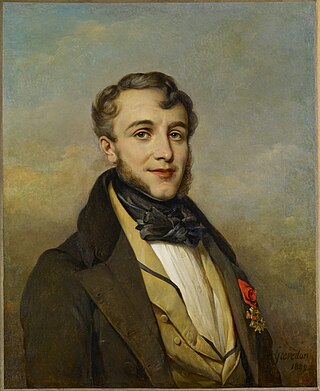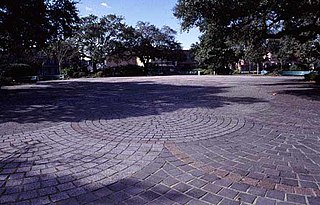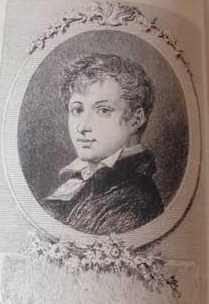Related Research Articles

Louis Moreau Gottschalk was an American composer, pianist, and virtuoso performer of his own romantic piano works. He spent most of his working career outside the United States.

Friedrich Wilhelm Michael Kalkbrenner, also known as Frédéric Kalkbrenner, was a pianist, composer, piano teacher and piano manufacturer. German by birth, Kalkbrenner studied at the Conservatoire de Paris, starting at a young age and eventually settled in Paris, where he lived until his death in 1849. Kalkbrenner composed more than 200 piano works, as well as many piano concertos and operas.
"Autumn Leaves" is a popular song based on a French song "Les Feuilles mortes" composed by Joseph Kosma in 1945. The original lyrics were written by Jacques Prévert in French, and the English lyrics were by Johnny Mercer. An instrumental version by pianist Roger Williams was a number one best-seller in the US Billboard charts of 1955.

Congo Square is an open space, now within Louis Armstrong Park, which is located in the Tremé neighborhood of New Orleans, Louisiana, just across Rampart Street north of the French Quarter. The square is famous for its influence on the history of African American music, especially jazz.

Ignacio Cervantes Kawanag was a Cuban pianist and composer. He was influential in the creolization of Cuban music.

The term Creole music is used to refer to two distinct musical traditions: art songs adapted from 19th-century vernacular music; or the vernacular traditions of Louisiana Creole people which have persisted as 20th- and 21st-century la la and zydeco in addition to influencing Cajun music.
Charles Lucien Lambert, also known as Lucien Lambert, Sr. or Lucien Lambert père (1828–1896), was an American pianist, music teacher and composer, born a free person of color in New Orleans before the American Civil War. Part of a family of prominent African-American composers, Lambert was noted for talent in music and gained international acclaim.
Nicolás Ruiz Espadero was a Cuban pianist, composer, piano teacher and editor of the posthumous works of American composer-pianist Louis Moreau Gottschalk.
Souvenir de Porto Rico, Op. 31, is a musical composition for piano by American composer Louis Moreau Gottschalk written from 1857 during a tour in Puerto Rico. Dedicated to the Dutch piano virtuoso and salon music composer Ernest Henry Lubeck, and published in Mainz circa 1860 with the subtitle of Marche des Gibaros, it is based on the Christmas folk song Si me dan pasteles, denmelos calientes, performed by local peasants known as Jíbaros. The piece makes use of Latin-American and Afro-American melodies and rhythms almost fifty years before early ragtime and jazz would popularize its use.

Charles Hubert Millevoye was a French poet several times honored by the Académie française. He was a transitional figure between the eighteenth and the nineteenth centuries as revealed in his Romantic poems. His poem beginning "Dans les bois l'amoureux Myrtil" is also well known as set to music in Vieille Chanson by Georges Bizet, as well as Le Mancenillier, as referred to in Meyerbeer's L'Africaine and Louis Moreau Gottschalk's serenade for piano Le Mancenillier, Op. 11.

A bamboula is a type of drum made from a rum barrel with skin stretched over one end. It is also a dance accompanied by music from these drums.
Bamboula, Op. 2, is a fantasy composition for piano written by American composer Louis Moreau Gottschalk during a delirium of typhoid fever in the French town of Clermont-sur-l'Oise in the summer of 1848. Dedicated "à sa Majesté Isabelle II, Reine des Espagnes", it is the first of the so-called set of four "Louisiana Creole pieces" that Gottschalk composed between 1848 and 1851.
Le Mancenillier, Op. 11, is a Creole-based composition for piano written by American composer Louis Moreau Gottschalk in Switzerland in the fall of 1848. Dedicated to "Madame Mennechet de Barival", it was published in Paris with the subtitle Sérénade by his publisher 'Escudiers' in April 1851. It is the fourth and last piece dubbed by musicologist Gilbert Chase the Louisiana Trilogy, written between 1844 and 1846 when Gottschalk had not yet come of age.
La Savane, Op. 3, is a composition in the form of a ballade written for piano in 1846 by the American composer Louis Moreau Gottschalk. With the subtitle Ballade Créole, it was first published in 1849 by Gottschalk's publisher 'Escudiers' and again in 1850 by Editions Schott, with a dedication to Maria II of Portugal on the composer's assumption that a trip from Madrid to Lisbon during his concert tour in the spring of that year would be likely to happen.

Alexandre Édouard Goria was a French virtuoso pianist and composer recognised among amateurs enthusiasts for his numerous salon pieces of different styles, which enjoyed great success at their time. The number of fancy arrangements and transcriptions by Goria of selected motifs from great operas proves the composer's great facility and the popularity of his name, which had commercial value. He was a favorite artist of lovers of brilliant music, concert and salon music.
Edward Swan Hennessy was an Irish-American composer and pianist who lived much of his life in Paris. In his pre-War piano music, he excelled as a miniaturist in descriptive, programmatic music. After joining a group of Breton composers, he developed a reputation as a "Celtic" composer, drawing on his Irish heritage, and writing in a style that was unique in a French as well as an Irish context. Even though he has been almost forgotten after 1950, his music was applauded by contemporary French music critics including Henri Collet, Louis Vuillemin, Émile Vuillermoz and Lucien Chevaillier. In some works, he used jazz elements and took inspiration from funfairs and industrial noise, anticipating trends associated with the group of "Les Six".
Jean-Charles Delioux (de) Savignac was a French composer, a pupil of Halévy and potentially Chopin, who was quite popular in the Paris salons of the nineteenth century.

Clara Gottschalk Peterson (1837–1910) was an American pianist, composer, and editor. She was the sister of virtuoso pianist Louis Moreau Gottschalk, editing a collection of his writings and working to preserve his memory after his death. She is remembered as "a staunch protector of her brother's music in its original form", as well as "a composer of considerable ability" in her own right.
References
- 1 2 3 4 5 Starr, S. Frederick (2000). Louis Moreau Gottschalk. University of Illinois Press. p. 77. ISBN 0252068769.
- 1 2 Nicholas, Jeremy. "Le bananier 'Chanson nègre', RO21 Op 5". Hyperion Records. Retrieved 5 July 2012.
- ↑ Chase, Gilbert (1992). America's Music: From the Pilgrims to the Present . University of Illinois Press. pp. 290. ISBN 0252062752.
bamboula gottschalk.
- 1 2 Graham, George Rex (1853). Graham's American monthly magazine of literature, art, and fashion, Vol. 42. G.R. Graham. p. 64. OCLC 1590031.
- 1 2 3 4 5 Loggins, Vernon (1958). Where the Word Ends: The Life of Louis Moreau Gottschalk. LSU Press. pp. 88–89. ISBN 080710373X.
- 1 2 Offergeld, Robert. "The Gottschalk Legend - Grand Fantasy for a Great Many Pianos". Thompsonian.info. Retrieved 5 July 2012.